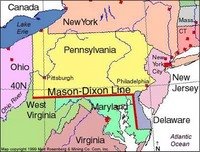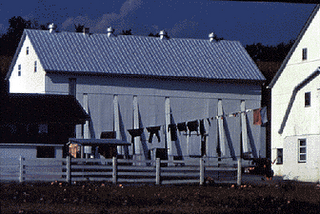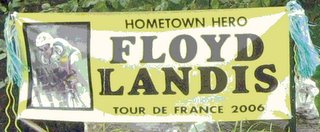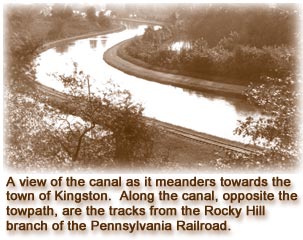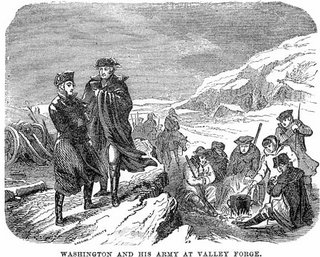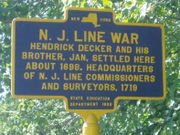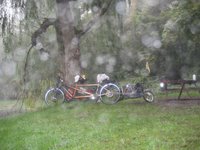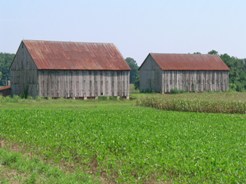Reflections
At the mid point of our journey, we’ve had a relaxing four days to recharge our internal batteries, do preventive maintenance on Olga, send some unneeded items home, and replenish supplies. We also spent time sorting our photos as well as catching up with emails from family, friends and surprisingly, total strangers who had come to find out about the blog. Apparently, Adventure Cycling ran a notice about our trip in one of their publications, and we have been both amazed and slightly overwhelmed by the response.
Arriving in DC having regular access to a computer, we were stunned to find nearly 20 emails in our inbox from individuals we’ve never met. Many offered encouraging words, some invited us to stay with them, and one asked us to meet with their bike club when we were passing through their town. WOW! It still gives us goose bumps thinking about it. We answered all the best we could, and realized that in the electronic age we live in, people can connect in new and unexpected ways.
While getting caught up on our chores, we’ve had time to reflect on the experiences of the past few weeks. For what their worth…
- The people of our country are kind and generous. We’ve been treated well everwhere we’ve been, and folks have gone out of their way to help us out.
- We live in a land of incredible wealth, both material and natural beauty. We know that there is poverty and suffering all around, but traveling at 8~9 miles per hour, we’ve looked into peoples homes and lives. We can see how they live, the cars they drive, what the roads and communities look like. And we like what we see.
- Traveling by tandem is a special treat. We’re able to communicate and work together, tell jokes, and enjoy the small triumphs of conquering each hill as a team. We laugh, sweat, and work as one. It is an extraordinary experience to share.
- There are lots of lawns to be mowed in the East. In fact, if you had to ask us what the most common sound we’ve heard on the trail, it is that of lawnmowers…riding, power, push mowers, you name it, we’ve seen and heard them. There are even stores where all they sell are lawnmowers. This is not something you see back from where we come from.
- The New England and Mid Atlantic states are exceptionally green and rich in foliage. Some rain was to be expected, and on the whole we have been prepared for it. What has come as a surprise is how damp everything is. New Jersey seemed tropical, with morning dew so heavy that it soaked our tent fly like a steady rain storm. Sometimes we rode through mist…not rain, but mist. The air would feel like an oversaturated sponge, dripping its excessive moisture on us. While we haven’t had to use moisturizers or skin lotion like we do back home, this would take some getting used to on a regular basis.
- As we had hoped, America’s colonial history and early beginnings have come alive for us. We’ve learned so much about our countries origin, and anticipate learning even more as we travel south through the Virginia plantation region and Civil War battlefields. Every place, every town, has a special story. It’s a treat to see it from our bike.
- It's been a pleasant surprise to spend time with some of our relatives. It's not something we had really planned on, but their support and interest in us has been uplifting and we appreciate the effort they made to spend time with us. Thanks.
- The ACA route is a gem. The route selection has been superb, and in those situations where we have had to ride in traffic, they’ve done a good job on directing us to the safest roads possible. However, as our suburban areas continue to expand, it will be a challenge to find roads that maintain their rural characteristics.
- Related to that, many folks in the rural East are concerned about growth. In a number of communities we passed through, we saw signs and placards declaring “No to Expansion”, or “Smart Growth” or “Maintain our Rural Character”. Heretofore we had never given any thought about growth issues in the East, assuming that this was more a Western phenomena. But people are rightly concerned about how they are beginning to loose their rural nature, and seem to want to do something about it. There are a surprising number of public land and farm trusts. We saw numerous examples of tracts of land that had been preserved in perpetuity, for future generations to enjoy. It will be interesting to see how all this plays out.
- A great number of people we meet talk about their own dreams and aspirations. What we know is this…you gravitate to what is uppermost in your mind. Five years ago we decided to take a long distance bike trip, and it became our driving force. And here we are, at the mid-way point of fulfilling that dream. Our advice is to live your dreams. Think it, plan it, and alter it as need be, but live it. Approaching life with a positive mental attitude and sense of purpose makes it happen. Like they say in the Nike commercial…Just Do It.
Tomorrow we head back out on the trail. We intend to ride on to Richmond and then take a detour to Colonial Williamsburg, Jamestown, and Yorktown. Even though it is not on the route, it’s an opportunity too good to pass up. We’ve enjoyed our respite, spending time with Donna, Brian, as well as our niece Lauren and nephew Mark. They have been marvelous hosts, and have helped make us feel right at home. But we’re anxious to get going again. Olga is in fine shape, with new brake pads and shift cables. All of BOB’s nuts and bolts have been tightened, and it’s time to be moving on. We’re venturing into uncharted territory for the two of us, and look forward to what we will discover down the road. It’s time to once again proceed on.


